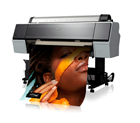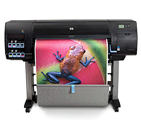|
Friday, September 9, 2011
Is it really September?

It’s been a busy summer here at Parrot, and, though we’ve all enjoyed a little time at the beach, we’re looking to roll up our sleeves and get back to work with some interesting and exciting new projects!
NEWS FLASH
Apple OSX Lion Status Report

A few short months ago, around the Fourth of July, Apple ushered in the Summer with an announcement for the release of their new operating system (OS) OSX Lion. For $69 you can upgrade to the latest, greatest Big Cat in the Apple lineup, featuring a claimed 250 new features. Upgrading is pretty simple, you need a system that meets these requirements:
· Mac computer with an Intel Core 2 Duo, Core i3, Core i5, Core i7, or Xeon processor
· 2GB of memory
· OS X v10.6.6 or later (v10.6.8 recommended)
· 7GB of available space
Note, you need to have an installed version of Snow Leopard (10.6) to install Lion (OSX 10.7).
Now. Here’s the million-dollar question. Fine, you can move to Lion, but should you?
There are a few things you should know, first. With the release of this update, Lion has discontinued Rosetta support. Rosetta is an emulation program that runs as a “shell”, supporting programs that aren’t designed to run on the newer, Intel chip processors. The older machines used a “Power PC” chip, or “PPC”, and many older programs didn’t or couldn’t update to run on the new Intel chips, so to accommodate them Apple implemented Rosetta. To put it as simply as possible, if you have programs that run only on a PPC platform, they probably won’t run on the Lion OS.
As always, we suggest you keep your nice, solid working system intact, without making any changes that might interfere with production… however, we know that’s not always possible.
Since we here at Parrot live and breathe digital color, we’re most concerned with our long-time standard Color Management applications first and foremost, and there’s a great site, the ColorWiki, that gives a rundown on where things stand with Intel and Lion support. Here is that site: www.colorwiki.com

Most current companies, like X-Rite, are taking advantage of the situation and releasing a new software package that’s fully Intel and Lion compatible, replacing older software. That package is the i1 Profiler, and replaces the old favorite i1 Match. The new software works on most current configurations, and provides all the functionality of i1 Match, and then some.
There are some applications that, in spite of being held as the industry standards, are being left in the dust. Monaco, ProfileMaker 5 Pro, the current, non-beta version of Colorthink, Pulse, Adobe CS2 versions and a few others will not run.
Past just the Color Management tools, there have been several reports of printer drivers and ColorSync problems within Lion, along with other image-processing and RIP software issues. The only thing you can really do to find out if your particular software is supported is to go to that site, look for Software Updates or Lion Support, and see what they say.
If you are considering updating a current system, always follow the basic housekeeping advice and back up before doing anything. In this case it is best to back up the entire disk image, so it can be restored if things go wrong. You should be able to create a separate boot disk for Lion if you have enough room on your drive, and then reboot into whatever OS you prefer to work in- a great solution if you want to test the water before diving in.
If you’re considering a new system, you don’t have a choice. Any new Apple system is going to be running Lion. If you need to run PPC-supported applications on your new system there are really only a few options to try, one is to create a Snow Leopard or Leopard boot disk on your Lion system (which will support Rosetta) and run your PPC applications through that.
We say “try”, because, at the time of this writing, we’ve been told it’s possible and likely, but untested. This strategy will NOT work on a new Macbook Air or Mini. Those two models will not run in anything but a Lion OS.
Another suggestion is to try an application like Parallels, which will run a “Virtual Machine” allowing you to run a different OS without having to re-boot. The worst-case scenario would be to use this option, and run Windows XP or 7, and run your required applications as Windows versions.
Oh, the irony.
Resources:
General info page for Lion: www.apple.com/macosx/whats-new
“What’s New” page with the list of features and improvements: www.apple.com/macosx/whats-new/features.html
The Store page where you can order the Lion USB thumb drive, along with a nice overview of the whole package: store.apple.com/us/product/MD256?mco=MjQ1NzE3NDM
The new Mac App Store, an application that launches from your toolbar allowing you to download applications directly from their site, much like you’d buy music in iTunes, here: www.apple.com/mac/app-store
Back to top
FEATURE
Parrot launches www.theBIGscan.com

Sometime this Spring we got the idea to provide a website that was laser-focused on a service that only we offer- large format scanning with the Cruse Synchon system. When we found that the domain name for www.thebigscan.com was available, well, we just couldn’t help ourselves. In June, theBIGscan was born!
Giving you a one-stop portal for all the important information on our large-format scanning capabilities, pricing, turnaround as well as some detailed information about what makes the Cruse scanning system different, www.theBIGscan.com makes getting large-format scans easy and fast. You can contact us through the usual channels, or email us at info@thebigscan.com. Take a look, and wander over to the sample gallery to see some of the more unusual work we do!
BACK TO TOP
PARROT IN THE NEWS
Parrot Gets Press!
We’ve been enjoying the spotlight of the imaging industry press quite a bit lately… both collaborating with some of the leaders in the industry via Digital Output Magazine, and getting all the attention in a great story on Large-Format Fine-Art scanning appearing in the September and October issues of Art World News. See the Digital Ouput story online here:
From Digits to Dollars: Wide Format Scanners Deliver Solutions

BACK TO TOP
TECH TALK
The HP DesignJet T2300 PostScript eMultifunction Printer Changes the Colloborative Workplace

Very few new products can claim to profoundly change the way you work, and think about work, but we believe the HP T2300mfp is going to do just that. It’s really a simple concept. We’re all used to the convenience of “MFP” machines in our office workflow, with the ability to print, scan and email documents from one workhorse laser printer. Somebody at HP had the brainchild to apply this basic technology to wide-format printing and scanning. It’s not new technology, it’s a way of combining existing technology to accomplish new things.
You can now have one machine that will print up to 44” wide from either a workstation or a USP drive plugged into its console… that same machine can scan and copy documents up to 36” wide.
Here’s the interesting part. The T2300 can both upload, and download, images and scans to the HP ePrint and Share “cloud”. This is a free, collaborative subscription service offered by HP for any partners who need to have access to files. For more information see the ePrint and Share site, here: https://h30510.www3.hp.com/public/features
This is huge. How this gets used in a collaborative project environment is almost beyond our ability to speculate. It truly is limited only by your imagination, and it’s going to change how you work with your global team.
Let’s consider a simple example. You’re working on an building project with teams all over the world. Your client is in New York, the architect
is based in Boston. The building site is in London, and you have several architects from the West Coast and Europe contributing to the effort.

Starting with the historical blueprints of the site, you scan them and post them to the ePrint and Share cloud where everyone can download and review them as .pdf format files. If they have wide-format printing capabilities they can output their own copies. They can be re-rendered as CAD files or drawings, and re-loaded to the ePrint and Share cloud, where they can be reviewed by the entire team. Here’s where it gets interesting.
People still like to mark up paper.
The first generation drawings can be marked up in meetings or by key people, and simply scanned and uploaded, then downloaded anywhere and reviewed, much like a contract can be annotated and then re-sent by a law firm. Any partner in the process can print, markup, scan and upload any documents required for the collaboration, if they have the HP T2300mfp. If they don’t, at the very least they can follow along by reviewing the .pdf files from the ePrint and Share cloud.
Have a project manager on the road about to give a key presentation of the latest changes? By loading the documents on a USB jump drive and plugging them in to the nearest T2300mfp they can print them out at the push of a button, with no workstation, no drivers to load.
To coin a phrase… this changes everything.
Back to top
Promotions
Big Deals on Epson and HP Printer
Both Epson and HP are offering some pretty aggressive incentives to replace that tired old workhorse you’re nursing along.
From Epson:
Epson Professional Imaging is announcing instant rebate and mail in rebate promotions on select Epson Stylus Pro printers. …
The Mail In Rebates require a coupon to be returned by the end user. Coupons are provided and also posted on the Epson Professional Imaging Website. www.proimaging.epson.com
Here are the printers and the details:
 

On the Hewlett-Packard side, they’re offering generous “Cash In/Trade Up packages for selected printers.
The details:
 
Call or email us at Parrot for more details on how these deals can work for you!
Back to top
|

